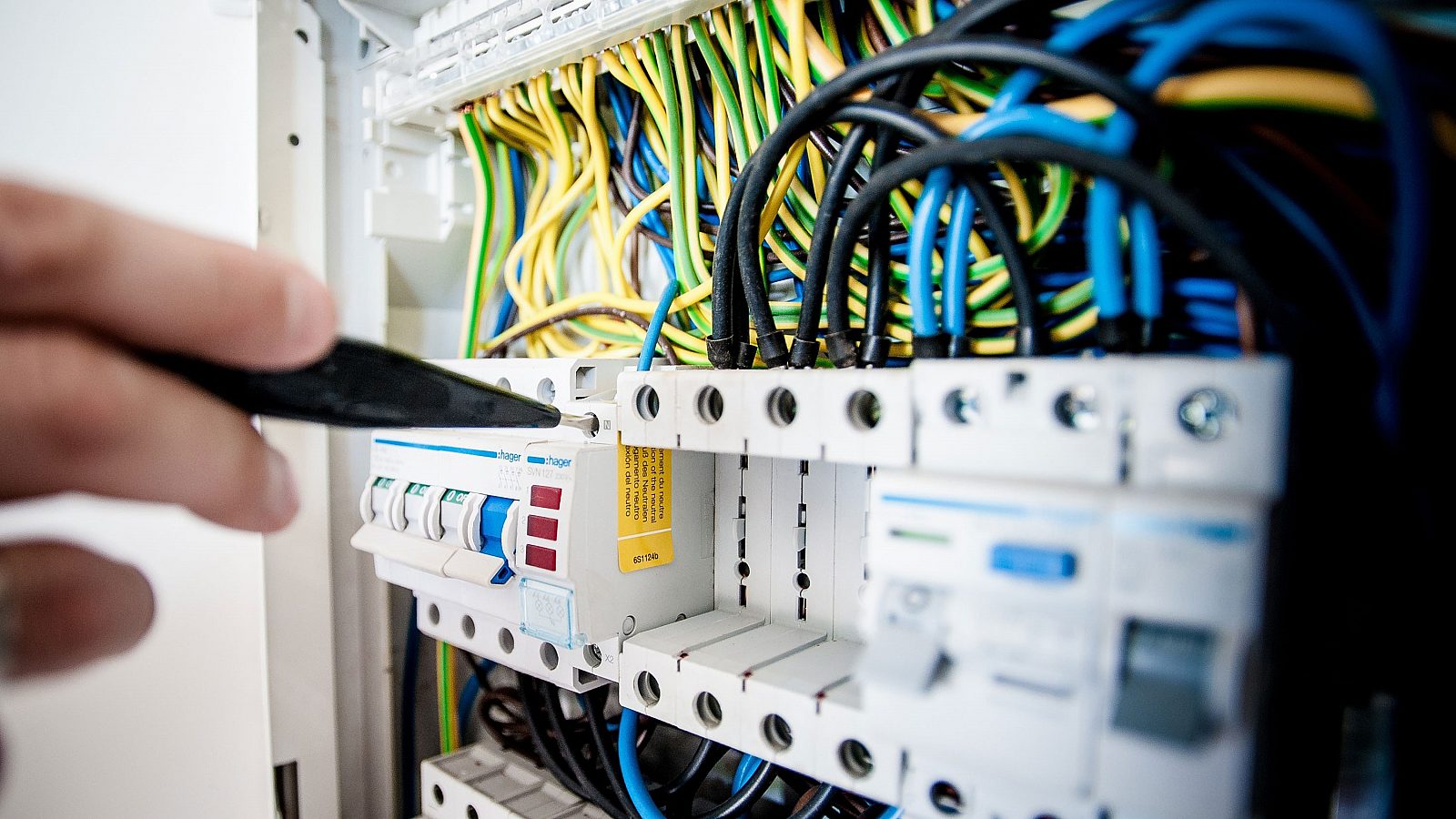RCD Testing RCD (Residual Currency Device), aka Safety Switch, perform a lifesaving job
Get a Quote

Overview
Most people are aware of safety switches that are located in the switchboard or at the outlet (power point) and this vital piece of your electrical safety needs to be tested to ensure that it will perform its lifesaving job when most needed. Under the current Australian Standards and general WHS compliancy, safety switch time test tripping is required in all work places on a yearly basis.
Information
Is RCD Testing mandatory?
It is mandatory in NSW for all power outlets in the workplace to be fitted with Residual Currency Devices (RCD’S) and to be tested in accordance of the Australian Standards.
For general peace of mind all safety switches (Residual Currency Devices) should be tripped annually to ensure that when most needed (accidental electrocution e.g.: cutting through lead, damage to portable equipment exposing live parts) that they work and save the life of your personnel.
Residual Currency devices are an integral part of all sites electrical supply it is also mandatory in NSW for all power outlets in the workplace to be fitted with Residual Currency Devices (RCD’S) and to be tested in accordance of the Australian Standards.
Time trip records of all safety switches need to be completed and trip times recorded and kept on site and available in event of an accident.
Services
ATTS have specialised in the general testing and replacement of RCD’s for the last 15 years
Our qualified electricians will attend your site and carefully access your switchboards and test all safety switches contained within and ensure that they trip within specified time
All information is then recorded and a barcode is placed against the RCD with the relevant information then contained in the test data spreadsheet
FAQs
Yes as the employer or person having control of the workplace it is your duty to ensure that RCD are regularly tested and records are maintained of individual test results
Link to this articleWhen RCD tests are carried out, it will trip the RCD and disconnect the circuit that it protects, so any electrical equipment will need to be turned off prior to RCD Testing being carried out. Each RCD Test only takes approximately 5 minutes for each RCD. We suggest that RCD Testing is carried out after hours, before the office opens, or you will need to advise your staff that the power will be disrupted for each circuit, and that there computers will need to be turned off.
Link to this articleA RCD looks like a circuit breaker, but also has a test button. The photograph shows two circuit breakers compared with a RCD, Combined RCD/circuit breakers are available also. These devices provide protection from overload, short circuit and electrocution. They also have a test button.
Link to this articlePortable RCDs attached to a power board or extension lead are available. RCDs on power boards and extension leads only protect the circuits of appliances connected to them. They are essential for people using power tools or electrical appliances outside that are not protected by a meter box RCD or power point RCD.
These are generally used and are considered mandatory on construction and building sites
Link to this articleRCDs may be fitted to a power point, and can be distinguished by the test button on the faceplate. They must be fitted to the first power point after the meter box. They are suitable for protecting electrical appliances in specific areas such as bathrooms and workshops.
Link to this articleRCD’s are designed to isolate (turn off) when an active (live) conductor detects earth (Object or person) in a split millisecond to potentially save you from electrocution.
These are a life saving device which has been around for many years and under current building code are required to be installed on all lighting and power circuits.
They are generally installed in your switchboard in replacement of circuit breakers and are easily identified by having a small pushbutton on the face for testing.
(Please note: Circuit breakers are not designed to trip to save your life, but are designed to protect the circuits wiring and switchboard)
Legislation and Australian Standards require that a time trip is conducted generally yearly by a qualified electrician or technician and that all details of the trip times are recorded.
This includes not only single phase safety switches (240v) but also 3 phase safety switches (415v)
All workplaces to AS/NZS 3760:2010
RCD Operating Time (RCD Tester)
- Non- Portable -Fixed RCDs – 12 monthly tests for operating time by qualified person
- Portable RCDs – 3 monthly test by qualified person
RCD – Push Button Test (by user)
- Non- Portable -Fixed RCDs – 12 monthly push button test by user
- Portable RCDs – To be tested daily or before connection of electrical equipment by user
In order to remain compliant to the standard, you will need to comply with the above test intervals in the section above.
There is a tolerance of 2 weeks allowed from renewal date for you to still achieve compliance.
Link to this article- Testers name who carried out the test
- Date testing carried out & re-test date
- Result from testing – Pass/Fail
- License no. of the electrician or certificate no. of the competent person carrying out the testing
- Asset Id No of the items tested
Any person can perform the push button test; however before that person performs the test they must be deemed competent.
The push-button test is to ensure that the RCD will trip when there is an earth leakage, and break the electrical circuit protecting the individual from suffering an electric shock, or electrocution. When you press the test button, and the RCD has detected an imbalance, the on/off switch will jump to the “off” position.
The test button will only test the RCD if an electricity supply is connected.
Link to this articleA RCD (Residual Current Device) is a safety device that disconnects a circuit when it detects an imbalance of the electric current. The RCD turns the power off almost immediately to prevent electrocution. While you may still receive an electric shock, the duration will be very short, reducing the risk of serious injury.
Where electricity is supplied through a socket, the risk associated with that supply must be minimized by the use of a safety switch (RCD).
A RCD cannot detect all types of faults, for example if a person receives a shock between the active and neutral conductors. However these circumstances are rare and the vast majority of incidents occur between the active conductor and earth, which is protected by a Safety Switch (RCD).
If a person comes in contact with a live electrical conductor, electricity flows through their body, causing an electric shock. Effects can vary from a tingling sensation or muscular pain to breathing difficulties, burns, and heart failure.
RCDs are extremely sensitive, disconnecting within 10 to 50 milliseconds (The standard allows up to 300 milliseconds but this is very rare that they reach this time and are generally deemed as failed and replaced) of detecting a leakage current. This stops the flow of electricity through someone’s body to earth. Importantly, this response time is much faster than the critical section of the cardiac cycle, and therefore reduces the risk of death or serious injury.
RCDs also protect against fire caused by faults in appliance, tools and wiring. If these faults go undetected they could cause a fire, or personal injury. RCD’s provide a means of early fault detection.
Link to this articleCan be carried out by a competent person, but they cannot carry out repairs, or remove the cover of the switchboard exposing live terminal, as only a licensed electrician can.
We suggest that you should only use a licensed electrical worker trained on the test equipment
ATTS use only qualified electricians to carry out RCD Testing.
Link to this articleCircuit Breakers and fuses are designed to protect electrical cables and fittings, installed in premises from overloading and short circuits. They cut the power when electrical wiring in the premises has too much current flowing through it. They are designed to prevent electrical fires, not electrocution.
Some Meter Boxes have surge protection fitted to safeguard appliances against a spike in electrical voltage, such as a lighting strike. Some power boards or extension leads also have surge protectors fitted. These devices do not offer any protection against electrocution.
Only RCDs will prevent electrocution by cutting the power to a circuit in the event of an earth leakage.
This why you need to ensure that your RCDs are regularly tested.
Link to this articleThe following documentation must be kept for all RCDs:
- Register of all equipment
- Record of formal inspection & tests
- Repair register
- Record of all faulty equipment showing details of services & corrective action
The test for the operating time of a RCD requires specific technical expertise and interpretation of results and, therefore, can only be carried out by an appropriately qualified or trained person. This means a licensed electrician or a person who has successfully completed a competency- assessed training course in the use of a RCD tester.
Link to this articleSome electrical appliances and old wiring may have a normal small amount of earth leakage which can trip a RCD.
This is more evident with old lighting fixtures that have iron core ballasts and when combined with a number of other light fittings, this gives a combined earth leakage greater than the RCD allows and will cause tripping. This can be solved by replacing the light fixtures with more modern LED type
Earth leakage increases with each additional electrical appliance that is plugged in, and if RCD keeps tripping out it may be an overloaded circuit. Any faults we recommend that you have your wiring and appliances checked by an electrician to ascertain the fault if a RCD keeps tripping.
Link to this articleThe majority of electrical fatalities could have been prevented by the use of a properly installed RCD, and regular testing to ensure they are working correctly.
By law most work places have a Residual Current Device (RCD) testing requirement for electrical equipment under AS/NZS 3760:2010 & AS/NSZ3012:2010 standards.
Link to this article
Get a Quote
Or just ask a question...
Related Services

Compliance
Testing & Tagging
Testing and Tagging your electrical appliances to make you compliant and your staff safe

Compliance
Exit & Emergency Light Testing
Emergency & exit lights help people escape a building. They must be tested periodically
